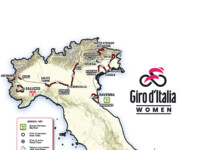By Charles Pekow
It has been well-known that in 20 years of Transportation Enhancements, states have spent pretty consistently slightly more than half of their federal money on bicycle/pedestrian projects. Now, in looking at two decades of data, the National Transportation Enhancements Clearinghouse (NTEC) has found that the lion’s share of the bike/ped money is pretty much evenly split among pedestrian projects and off-road trails. States use far less of the money converting abandoned rail corridors into trails, adding bike lanes to roads, educating people about safety and so forth.
NTEC, which annually releases reports on how states use Enhancements funds, released a special study recently commemorating the 20th anniversary of the program. The Enhancements funding stream has given states about $13 billion since 1992 in federal highway money for non-motorized use. States have spent about 10.39 billion of the money so far (they get several years to use it all after receiving it) on 27,009 projects.
States have historically used close to 60 percent the funds for bike/ped projects of one kind or another, with the rest going to landscaping, tearing down eyesores along highways such as abandoned billboards, rehabilitating historic structures, archeological digs and opening transportation museums. States or communities that get the funds must put up some of their own money or in-kind contributions to augment the federal funds.
Over the two decades, states have funded 1,391 rail-trail projects using $720 million of the funds by NTEC’s count. But the average allotted to rail-trail conversions was $519,373, significantly larger than the average for other Enhancements projects. But why so few rail-trails? NTEC offers several possible explanations: “Rail-trails are often larger, more complex, and take longer to realize than other types of (enhancements) projects. Most of the more straightforward rail-trail projects have already been developed. Those projects that remain may face more complex issues with respect to ownership, valuation, or liability. In addition, the rate of railroad abandonment has decreased across the country as railroads have begun to retain corridors in hopes of restarting service.”
States only spent $36 million on 208 bike/ped safety education programs.
Off-road trails got $2.6 billion, or 39.1 percent of the funding while pedestrian projects got $2.548 billion, or 38.4 percent of the spending.
On-road bike paths got only $625 million, or 9.4 percent of spending.
States only spent $36 million on 208 bike/ped safety education programs.
And what of the future? Only 17 states reported their future plans. Of 801 projects NTEC counted on the drawing boards, bike/ped projects account for 64 percent of the money. NTEC warns, however, that it can’t predict a bigger share for cycling as these states may not be representative or the rest of the country.
Full disclosure: NTEC is partially funded by the Rails-to-Trails Conservancy, of which I am a member.
You can see the Transportation Enhancements Spending Report: 1992-2011, 20th Anniversary Edition at http://www.nybc.net/wp-content/uploads/TE_Spending_Report_FY111.pdf.
Utah has spent a larger share than average on bike/ped projects: about $47 million, about $3.5 million on rail-trails and only about $618,000 on education.
Idaho, too, has spent most of its Enhancements money on bike/ped (about $32 million) not counting its bigger percentage than Utah (about $5.5 million) on rail-trails. The state didn’t report spending any money on education.










